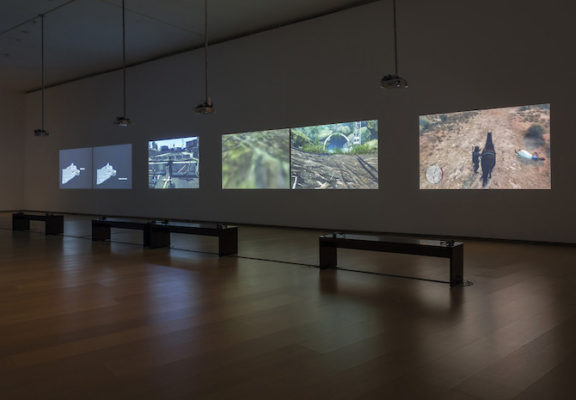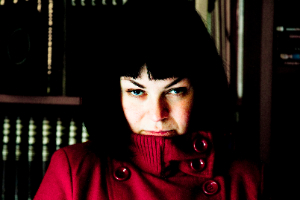Search
To search for an exact match, type the word or phrase you want in quotation marks.
A*DESK has been offering since 2002 contents about criticism and contemporary art. A*DESK has become consolidated thanks to all those who have believed in the project, all those who have followed us, debating, participating and collaborating. Many people have collaborated with A*DESK, and continue to do so. Their efforts, knowledge and belief in the project are what make it grow internationally. At A*DESK we have also generated work for over one hundred professionals in culture, from small collaborations with reviews and classes, to more prolonged and intense collaborations.
At A*DESK we believe in the need for free and universal access to culture and knowledge. We want to carry on being independent, remaining open to more ideas and opinions. If you believe in A*DESK, we need your backing to be able to continue. You can now participate in the project by supporting it. You can choose how much you want to contribute to the project.
You can decide how much you want to bring to the project.

The 21st century could be characterised, amongst other things, for an endless overproduction of images. Television, the media, advertising, the Internet, and social networks, its users included, collapse the many screens (computers, smartphones, iPads…) with images stemming from numerous sources. The de-contextualisation and constant reinterpretation of these images is somewhat inevitable, but the frenetic rhythm of production hinders any calm reflection on the connotations that could be deduced from them. Consequently these consumer images, what could be called fast food images, are divested of a large part of their power. They circulate in front of the spectator in a parade as multitudinous as it is anodyne, with only an occasional interruption in the constant litany triggering awareness and producing random trending topics, small shocks that briefly stir us out of our lethargy (albeit, inoffensively). On the other hand, while the images destined for consumption by the majority of the population multiply exponentially, anesthetising us and diminishing our ability to react, a different type of images is conquering a new parcel of power. The images captured by surveillances cameras that control our movements in prisons, supermarkets or (supposedly) public spaces, and which allow their final recipients to define to perfection our patterns of behaviour and consumption.
The G7 gallery of the Instituto Valenciano de Arte Moderno holds until 22 May, the first retrospective exhibition in Spain of Harun Farocki, whose works invite us to reflect upon the origin, function, and fate of images. On the devices that have produced them, the way they circulate, the public for whom they are designed, the principal aim of these images, or the surrounding discourses they generate. Expelled in the 60s from the Berlin Academy of film and television for political reasons, Farocki began to make experimental films under the influence of directors like Jean-Luc Godard, Chris Marker and the tandem Jean-Marie Straub/Danièle Huillet. He subsequently worked as the editor of the film magazine Filmkritik and taught in places like Düsseldorf, California, and Vienna. After the 60s and up until 2014 (the year of his death), the German filmmaker persisted untiringly with his endeavour to awake a critical awareness of the spectator in front of these images.
In the book Harun Farocki. Against What? Against Whom?[[Harun Farocki. Against What? Against Whom?, Antje Ehmann & Kodwo Eshun (eds), London, 2010, Koening Books.]], Georges Didi-Huberman emphasises “there is no image that doesn’t imply simultaneously gazes, gestures and thoughts.” Bearing this in mind, it ends up being “particularly absurd to try and disqualify some images under the argument that they apparently have been manipulated.” Is it not that any choice of plane is in itself a manipulation? Isn’t also the taking of a photograph at one specific moment or another? The series of works Parallel I-IV (2012-2014), proposes an initial hypothesis that has ended up becoming fact: computer generated images already have the capacity to substitute filmed ones, the function of which can ultimately be shifted towards another ambit. We are capable of “creating” a virtual reality and we interact with the 3D images of which it is configured in a real and direct manner. Reconstructions of battlefields are used to train soldiers or even for therapeutic ends. In Serious Games I-IV (2010), Farocki records several of these training and therapy sessions.
That wars drive the technological development of societies is a statement that is both as undeniable as it is devastating. The inherent relation between production and destruction has always been there. In effect, the Second World War was the first impulse for the development of the airplane, a knock on effect, the computer, stereo sound and the short wave radio. In the essay The Shock Doctrine, The Rise of Disaster Capitalism [[La doctrina del shock. El auge del capitalismo del desastre, Naomi Klein, Ed Paidós, Barcelona, 2007]], the journalist Naomi Klein cites innumerable examples of major disasters that have been used to obtain economic profit, to manipulate the population, or to impose by force political, social, or economic reforms (in the majority privatizations). The disappearance of more than 30.000 people in Argentina in the sixties, the massacre of Tiananmen Square, the Falklands War, or the attack by OTAN on Belgrade in1999 are just some of the more representative examples.
Behind the horror supposed by the death of millions of people, we discover an immensely profitable industry that eagerly looks forward, profiting from the weakest levels of society. An increasingly powerful and depersonalised industry thanks to the innumerable technological advances. In works such as Auge/Maschine (Eye/Machine, 2000-2003), Farocki shows us that the electronic age has substituted the mechanical age, that manual work has been progressively eliminated (displaced to the poorer countries) and machines have substituted manual labour. War is presented as a fact “without human presence”, as an event that doesn’t have to bear people in mind, even though they are inevitably present. It is no longer necessary for a human to sustain the camera to obtain a record of what it is happening on the battlefield because this camera can be placed directly on a remote-controlled missile.
In Nicht löschbares Feuer (The inextinguishable fire, 1969), the voice over appeals directly to the spectator, it questions how to show the horror provoked by Napalm. A cigarette burns at 400ºC, Napalm at 3000ºC. In the face of the spectacular dramatization and emotional pornography commonly offered by Hollywood films, Farocki opts for a Brechtian distancing, archival images, extreme sobriety and persistent inquiry.
One possible methodology with which to understand the causes and consequences of the war is to visit the place where weapons are made, to analyse the rhythms of work, and the way they function (Eye/Machine I, II y III). To understand how prisons function (I Thought I was seeing Convicts, 2000), nothing better than to visit one, to watch the recordings of security cameras and study the behaviour patterns of guards and prisoners. In this way, Farocki converts the so-called operatiional images (the aim of which is not to entertain nor inform, so much as to form part of an operation) into an artistic discourse.
But of the works shown in the retrospective the one that truly allows us to comprehend the work of the German filmmaker is undoubtedly Schnittstelle (Interface, 1995). In this documentary installation shown in this instance on two screens, the director reflects on the process and consequences of montage using images from his own work. How does the codification and decoding of messages work? What relation are we capable of establishing with the images that appear on the screens? How do the images interact when they are placed in opposition or superimposed? Seeing Farocki in front of the editing table, I’m inevitably reminded of the series of documentaries Cinéastes de notre temps; specifically the chapter directed by Pedro Costa and dedicated to Jean-Marie Straub and Danièle Huillet (Où gît votre sourire enfoui?, 2001). In it, Straub and Huillet are making constant decisions at the editing table. The images, which will end up forming part of ¡Sicilia! (1999) appear on the screen, frames advance, reverse or pause. Both directors debate untiringly regarding the pertinence of including or not one single frame. A frame that perhaps the spectators don’t perceive, but which is still there, a question of life or death.

It’s hard for Marla Jacarilla to define herself, though she’s been obstinately trying to, since a few years ago they told her it would be good for her to have an artist’s statement. She makes art (or at least tries to) she writes about film and every now and again reflects on things that usually pass unnoticed. Somehow or other this all comes down to one thing: an obsession for the letters that form words, that then form sentences, that form paragraphs, that form chapters that tell us stories.
"A desk is a dangerous place from which to watch the world" (John Le Carré)